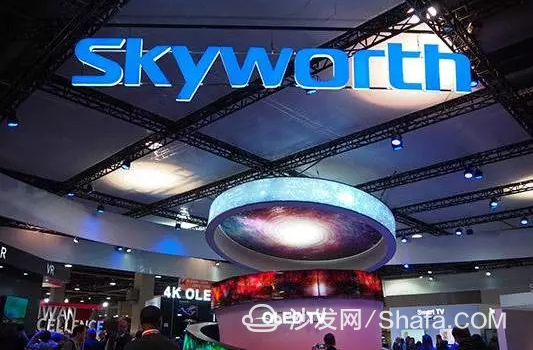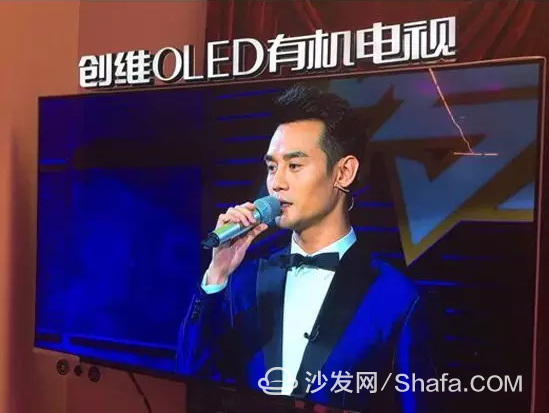Earlier this year, Xiao Bian's survey of 30 senior editors showed that the support rate of OLEDs is higher than that of quantum dots and other display technologies. The enthusiasm of color TV makers for OLED display technology also suggests that OLEDs are dominant in the next battle.
Allies have greeted the outbreak of OLED OLED is not the future, on the one hand, the authority of the industry research institutions have given optimistic forecasts; the other hand, panel makers and TV companies have already given the answer given by the action.
Taking the Chinese market as an example, OLED TVs in the Chinese market will maintain a 400% growth rate in 2016 and 2017, based on the future development trend of OLED. The research institution INS also pointed out that in 2018, the global market share of OLED TVs in China will stabilize at around 20%, and China will become the world’s largest OLED market.
In addition, from the participation of color TV manufacturers, last year's IFA Berlin International Consumer Electronics Show, it has already felt the growing OLED camp. European and American manufacturers Philips, Metz, Vestel, Loewe, Grundig, Skyworth in China, Changhong, Panasonic, Japan, and other brands supported OLED TVs and displayed new products.
Sony, the former color TV giant, announced its return to the OLED TV industry last year, and exhibited the latest OLED TV at CES2017, which was held in early January 2017. Panasonic also displayed its first HDR-enabled OLED TV at CES2017. At CES 2017, LG demonstrated a LG Signature 4K OLED W TV that can be attached to a wall. Immediately afterwards, Toshiba released its first 4K OLED TV in Japan. From the international to the domestic, the expansion of the OLED camp has not diminished.
In particular, domestic color TV companies represented by Skyworth are increasing their investment in OLED display technology. Last year, Skyworth and BOE and Hess released the first Chinese self-developed M1 series OLED TV, which broke the over-reliance on imports of OLED panels and promoted the rapid development of China's most critical OLED display panels and “high-core†chips. further improvement.

In January this year, Skyworth participated in CES's Skyworth many times. At the CES2017, it demonstrated the 4K OLED video walls built by the S9D and S9-I systems, and for the first time exposed G9-based OLED TVs, setting off an OLED boom.
Xiao Bian believes that there are LG, Skyworth and other leading color TV giants, but also the active promotion of allies and the growing maturity of the industry chain, OLED's pace of development will be more rapid. With the rise of the Chinese OLED market, Skyworth has unique advantages in localization.
Standing on the high end of the air
At the end of 2016, the "price war" in the color TV industry seems to have ended. After the tide retreated, the surviving color TV companies began to transform. Whether it is technology diversification, ultra-high-definition, or large-size, the structure of color TV products is high-end.
However, this seems to have entered the routine of traditional TV brands such as Skyworth, they have technical heritage, have manufacturing capabilities, have the ability to control the supply chain. Obviously, after the TV industry structure has stabilized, high-end breakthroughs will set off the next wave.
According to the “2016 China Flat Panel TV Consumption and 2017 Market Trend Forecast Report†recently released by the China Electronic Chamber of Commerce Survey Office, 55-inch and 65-inch HDR TVs account for more than 70% of the entire market. Traditional high-end products have traditionally performed well. The sales of television brands in China accounted for 80%. The continuous increase in the share of high-end products in the color TV market has brought unprecedented opportunities for the development of high-quality products.

In Xiao Bian's view, the chaotic low-price era has caused consumers to question a lot of Internet TV brands. High-end is not only an important measure to re-establish consumer reputation, but also reflects the core competitiveness of color TV companies, especially when China enters stocks. In the market, the wave of replacement has already begun.
In fact, from the end of last year, panel prices continued to rise, the price war has been unsustainable, television prices have begun, low profits and even negative profits for color TV companies agonizing, caught in selling TV is not as good as selling cabbage. Therefore, to meet consumer demand and launch high-end products will further increase the price of color TV products, it will also bring huge profits to enterprises, and store energy for research and innovation.
High-end is not a new bottle of old wine, but must be supported by effective technological innovation. For example, the highest image quality consumers are most concerned about, the Skyworth 55G7, which was released in December last year, adopts 4-color HDR technology to enhance image quality, is equipped with HDR chip decoding, and has 4-color screen-control chip processing capabilities, becoming the industry's top HDR technology. In addition, Skyworth OLED S9D integrates AR technology and TV screen for the first time, enhancing the interactive experience between the real-time virtual world and the real world.
From this point of view, after a wave of intelligent, Internet-based waves, smart TVs have become the standard for television products. For enterprises that are not well-equipped with techniques and who are good at making use of them, marketing gimmicks are no longer needed. In the future, OLEDs are urgently needed. Technological innovations such as HDR and AR/VR are driving the continued high-end development of TV products and seeking new outlets.
Soft and hard integration changes the future
How do high-end products gain consumer recognition? Soft and hard integrated products are indispensable. In addition, we must combine strong offline experience marketing with experience as the king.
For example, television's picture quality, display effect, appearance design and living room environment, Internet video content playback experience, and product sales / after-sales service experience and a series of demands. It can be seen that the future television will enter the era of integration of hardware and software and strong experience.
From the hardware aspect, Skyworth's decades of technological innovation, product research and development, and manufacturing capabilities have accumulated strong forces. Many television products including Skyworth OLED organic TV S9D have been integrated with AR/VR technology to enhance the interactivity of TV terminals.

In terms of software and content services, last year, Liu Zhizhi, vice president of the Board of Directors of the Skyworth Group and president of the color TV business division, once mentioned: “Content is the added value of hardware, hardware is the carrier of content, and both are strongly related.†and disclosed Skyworth’s The new strategy is content production. Beijing Satellite TV’s variety show “Cross-Border Song King†has become Skyworth’s “first show†in content production.
Coupled with iQIYI Investment Co., Ltd., the two sides set up a joint investment in high-quality film and television IP to ensure the superiority of single-play content. In addition, Skyworth will provide one-to-two-year Tencent video VIP membership service to mid-to-high-end TV consumers based on the original content. Skyworth is leading the industry in coverage and differentiation of content platforms.
Online channels have now become the focus of Internet TV and traditional TV competition. For example, OPPO and vivo in the smart phone field have been backtracked by offline channels, providing references for Internet TV brands, and have increased the construction of offline channels to narrow the gap with consumers. In terms of Skyworth, traditional offline channels have obvious advantages. Competitors will not be able to surpass them in a short period of time, which will give Skyworth sufficient time to continue high-end product and service innovation.
In short, for the color TV giants, technology is the lifeblood of survival, Japanese TV companies from glory to decline are the wrong choice of technology line. It is determined that the future will not only require judgment and courage, but also lasting execution. In terms of OLEDs, the addition of allies and the accumulation and expansion of the industrial chain have reduced the risk of technology selection. In the face of the current leadership of South Korea's Hutchison, it is worth looking forward to whether Chinese companies can achieve overtaking.
Product description:
Removable frying pot&basket with non-stick coating
Automatic shut-off with ready alert
304 stainless steel heating element
Heat resistant material inside enclosure
Removable and heat insulation handle for frying basket
Prevent slip feet
With fan guard,more safety
Certificates: GS CE CB SAA RoHS LFGB
Colour: customized
English manual&cookbook
5L Air Fryer,Air Fryer Deep,Hot Air Fryer,Industrial Deep Fryer
Ningbo Huayou Intelligent Technology Co. LTD , https://www.homeapplianceshuayou.com